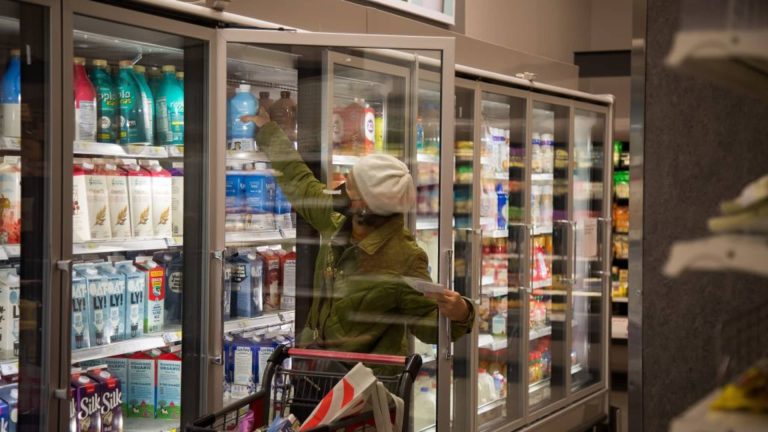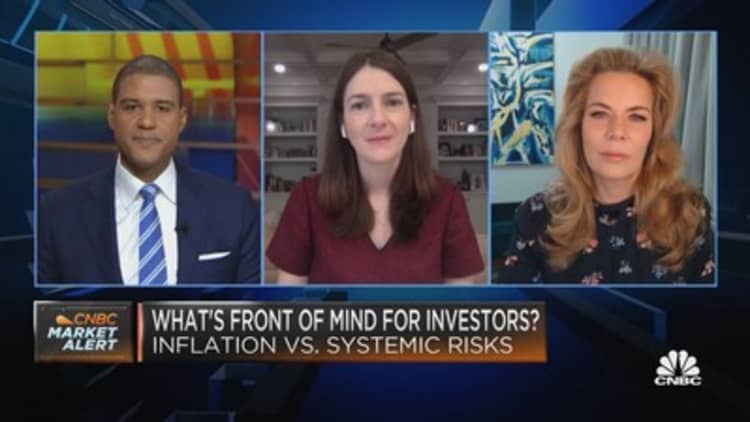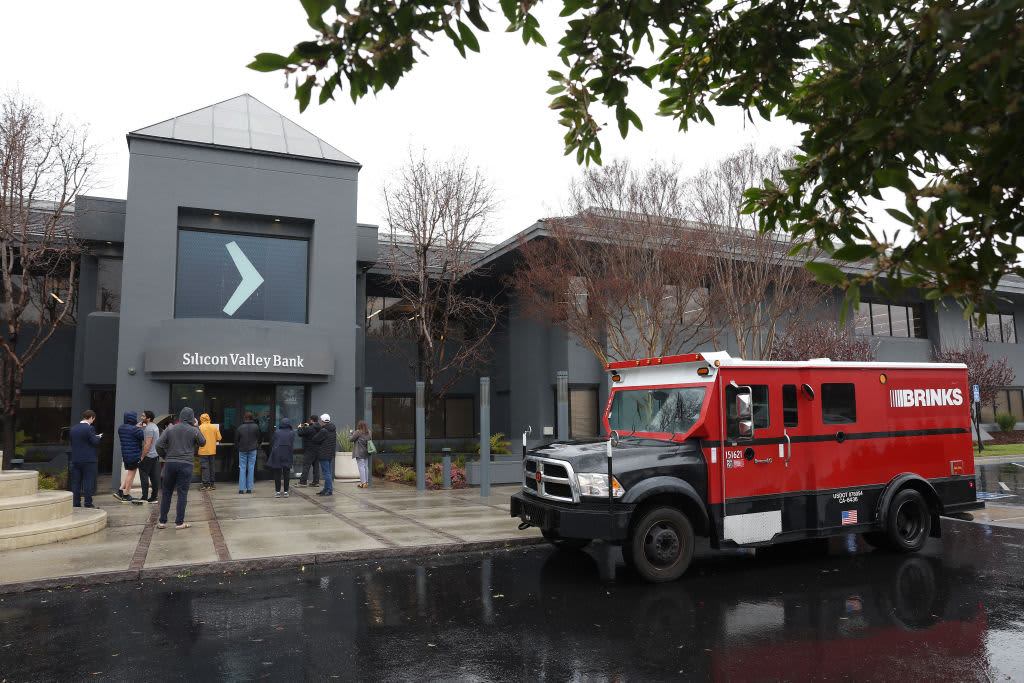
[ad_1]
A customer shops at a grocery store in Brooklyn on Feb. 14, 2023.
Michael Nagle/Xinhua via Getty Images
The annual inflation rate in February continued its gradual cooling trend, though it remained well above policymakers’ target.
Inflation is a measure of how quickly prices are rising or falling in the U.S. economy.
The consumer price index, a key inflation barometer, rose by 6% in February relative to a year earlier, the U.S. Bureau of Labor Statistics said Tuesday. The index accounts for price changes across a broad basket of consumer goods and services, in categories like energy, food, housing and entertainment.
February’s reading was in line with economists’ projections. It follows a 6.4% annual gain in January and 6.5% in December, and was the smallest 12-month increase since September 2021.
“It’s still high, obviously,” Mark Zandi, chief economist of Moody’s Analytics, said of the annual inflation rate. “It’s slowly but steadily receding.
“There are some good reasons to be optimistic inflation will continue to fall back over the next year.”
More from Personal Finance:
What two bank failures mean for consumers and investors
Here’s what to know about FDIC-insured bank deposits
There’s a quicker, cheaper way to go to college but few try it
A positive but declining inflation rate doesn’t mean consumer prices are falling; it signals that they’re increasing more slowly.
Inflation will likely be close to 3% by year’s end, Zandi said. However, that estimate assumes the U.S. avoids recession, which would rein in inflation more quickly but trigger negative side effects like rising unemployment. Fear of this so-called “hard landing” scenario increased in recent days after failures in the banking sector, though regulators are trying to contain the fallout.
Here’s what drove February inflation
Housing prices jumped by 8.1% in the past year, according to the BLS — accounting for more than 60% of inflation after stripping out food and energy prices, which can be volatile.
Other “notable increases” included motor vehicle insurance (up 14.5%), household furnishings and operations (up 6.1%), new vehicles (up 5.8%) and recreation (up 5%). Grocery prices are up 10.2% and dining out is up 8.4%. Energy prices jumped 5.2%.
Overall inflation has moderated from June’s pandemic-era peak over 9% but remains higher than any point since the 1980s.

“The pervasiveness of inflation is an ongoing issue,” said Greg McBride, chief financial analyst at Bankrate.
“This is not confined to one or two categories or limited to discretionary spending,” he added. “It’s broad-based across categories that are absolute necessities in the household budget.”
But it appears new car prices will soften as China reopens and supply chains normalize, housing inflation is poised to slow, and wage growth is cooling in the labor market — all of which should translate to tamer inflation, Zandi said.
Inflation a byproduct of supply, demand imbalances
Consumer prices began rising at a rapid pace in early 2021 as the U.S. economy started to reopen after the pandemic-related shutdown.
The increase resulted from supply and demand dynamics, economists said.
Americans who’d been confined to their homes for a year unleashed a flurry of pent-up demand and savings that had been amassed from government relief and an inability to spend money on dining out, entertainment or vacations.
The rapid reopening snarled global supply chains, a dynamic exacerbated by war in Ukraine. In other words, supply couldn’t keep up with consumers’ willingness to spend.
Inflation was initially confined to physical goods like used cars and trucks. Goods inflation has retreated but has since spread to the services sector largely due to business’ high demand for workers, economists said.
That labor demand has put upward pressure on wages, feeding into higher services prices, said Paul Ashworth, chief North America economist at Capital Economics.
“That appears to be the bigger [inflation] factor now,” Ashworth said.
SVB failure spurred ‘hard landing’ fears
It’s unclear how quickly inflation will retreat from here, economists said.
The U.S. Federal Reserve aims for a long-term rate around 2%. The central bank has been raising interest rates aggressively to tame inflation. Higher borrowing costs for consumers and businesses are expected to slow the economy, feeding into reduced demand for labor, slower wage growth and, ultimately, lower inflation.
The Fed is trying to manufacture a so-called “soft landing,” whereby by inflation slows but the economy doesn’t tip into a recession.
Fears of a “hard landing” have risen in recent days, after Silicon Valley Bank and Signature Bank failed, triggering concerns that the contagion could spread to other financial institutions. SVB’s failure was the biggest since the 2008 financial crisis and the second-biggest in U.S. history.
A lot of this is based on irrational fear.
Paul Ashworth
chief North America economist at Capital Economics
The federal government stepped in on Sunday to alleviate concern. Regulators backstopped uninsured consumer deposits at the banks and offered short-term loans to other institutions impacted by market instability.
“A lot of this is based on irrational fear,” Ashworth said of bank runs.
Inflation would come down more quickly in a “hard landing” scenario but at the expense of an economic downturn, he said. One example of how that could play out is if consumers continue to pull deposits from banks, constraining banks’ ability to lend money, thereby tightening credit for businesses, which might pull back on hiring, slashing confidence across the economy.
It’s too early to tell whether the government’s efforts will bolster consumer confidence and stem the contagion, or whether irrational behavior persists, Ashworth said.
[ad_2]
Source link

